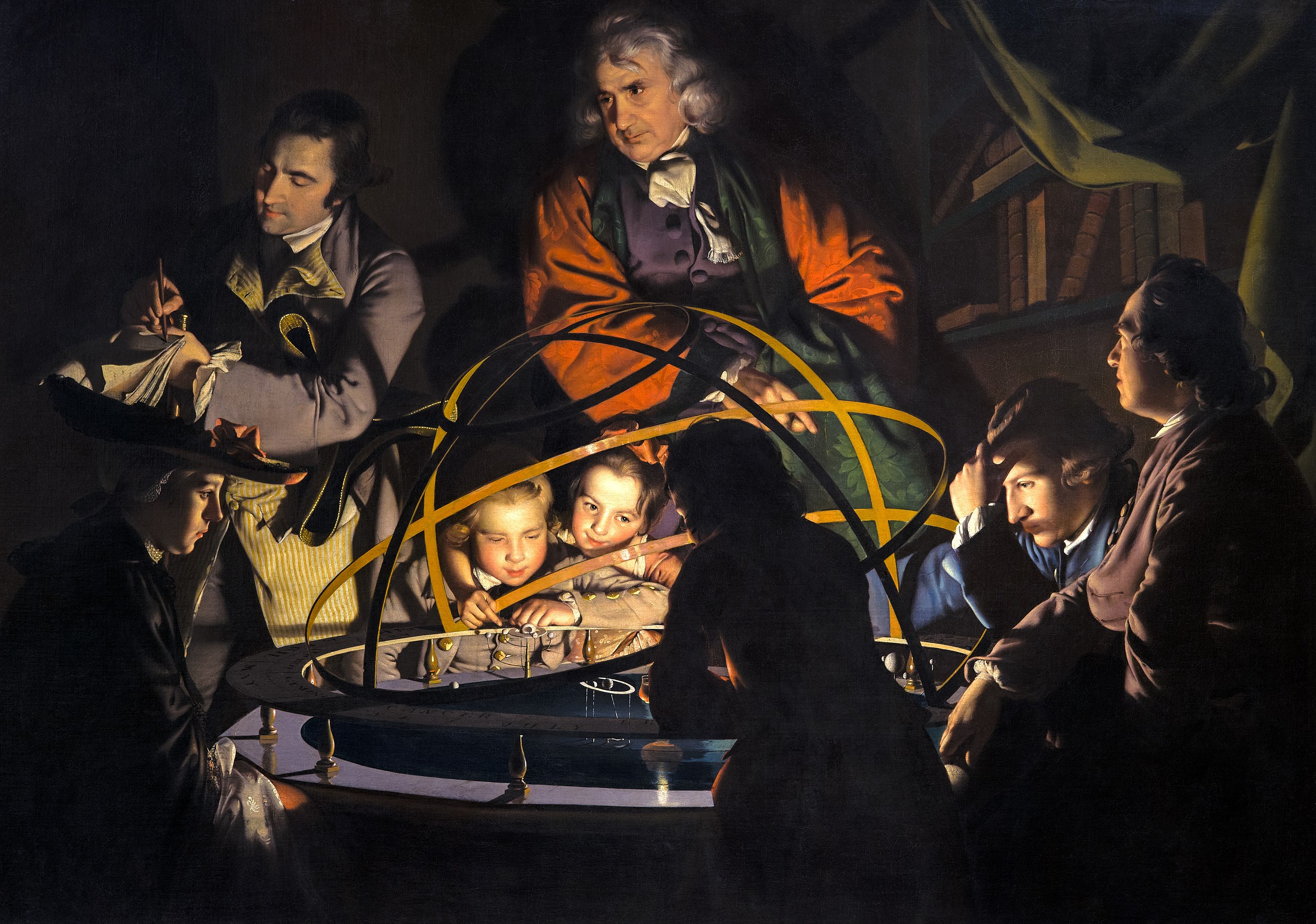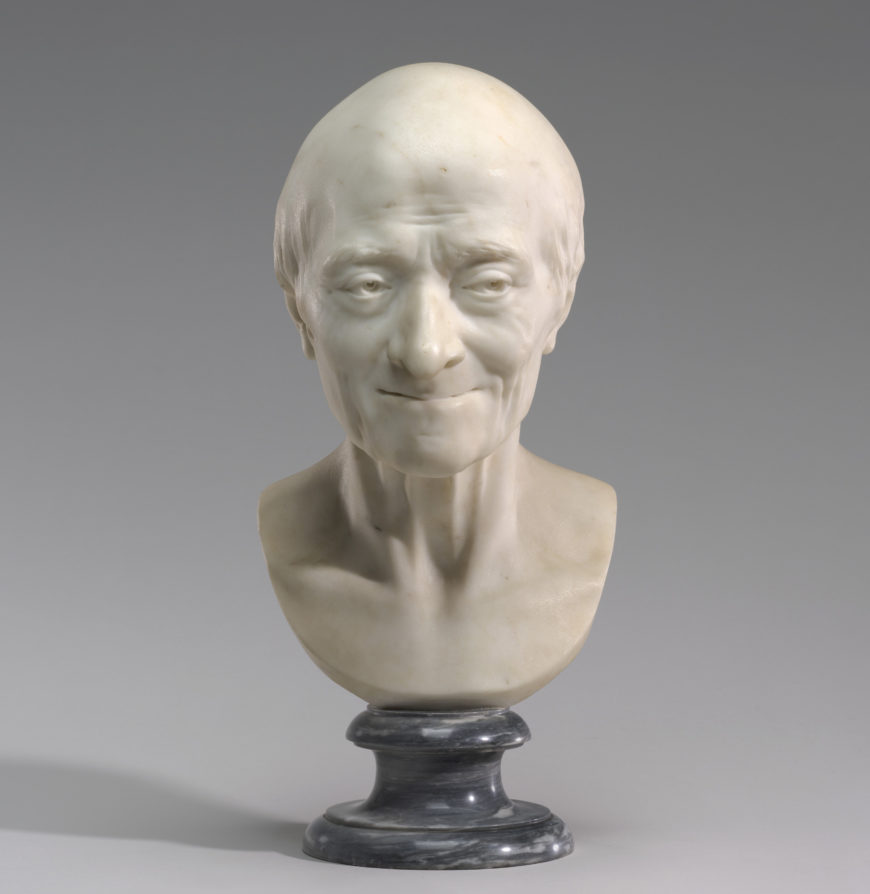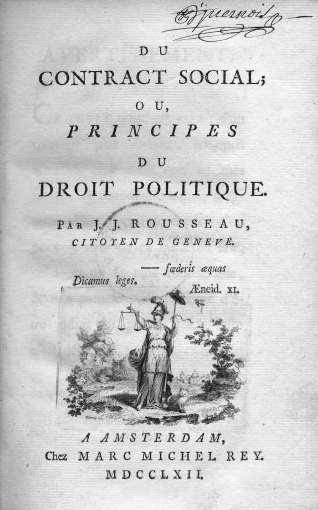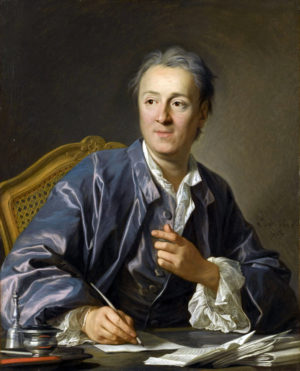
Joseph Wright of Derby, A Philosopher Giving a Lecture at the Orrery, c. 1766, oil on canvas, 147.2 x 203.2 cm (Derby Museums and Art Gallery, England)
In A Philosopher Giving a Lecture at the Orrery by Joseph Wright of Derby we see an orrery— a mechanical model of the solar system. In the center is a gas light which represents the sun (though the child who stands in the foreground with his back to us block this from our view); the arcs represent the orbits of the planets. Wright concentrates on the faces of the figures to create a compelling narrative.
With paintings like these, Wright invented a new subject: scenes of experiments and new machinery. This was the beginning of the Industrial Revolution (think cities, railroads, steam power, gas and then electric light, factories, and machines). Wright’s fascination with light, strange shadows, and darkness, reveals the influence of Baroque art.

Jean-Antoine Houdon, Voltaire, 1778, marble, 36.5 x 21.3 x 21.3 cm (National Gallery of Art, Washington, D.C.)
Enlightenment
Toward the middle of the eighteenth century a shift in thinking occurred. This shift is known as the Enlightenment. You have probably already heard of some important Enlightenment figures, like Rousseau, Diderot and Voltaire. It is helpful I think to think about the word “enlighten” here—the idea of shedding light on something, illuminating it, making it clear.
The thinkers of the Enlightenment, influenced by the scientific revolutions of the previous century, believed in shedding the light of science and reason on the world in order to question traditional ideas and ways of doing things. The scientific revolution (based on empirical observation, and not on metaphysics or spirituality) gave the impression that the universe behaved according to universal and unchanging laws (think of Newton here). This provided a model for looking rationally on human institutions as well as nature.
Reason and equality

Jean-Jacques Rousseau, Du contract social ou Principes du droit politique (or The Social Contract or Principles of Political Right), 1762, France (photo: R.A. Leigh)
Rousseau, for example, began to question the idea of the divine right of Kings. In The Social Contract, he wrote that the King does not, in fact, receive his power from God, but rather from the general will of the people. This, of course, implies that “the people” can also take away that power.
The Enlightenment thinkers also discussed other ideas that are the founding principles of any democracy—the idea of the importance of the individual who can reason for himself, the idea of equality under the law, and the idea of natural rights. The Enlightenment was a period of profound optimism, a sense that with science and reason—and the consequent shedding of old superstitions—human beings and human society would improve.
You can probably tell already that the Enlightenment was anti-clerical; it was, for the most part, opposed to traditional Catholicism. Instead, the Enlightenment thinkers developed a way of understanding the universe called Deism—the idea, more or less, is that there is a God, but that this God is not the figure of the Old and New Testaments, actively involved in human affairs. He is more like a watchmaker who, once he makes the watch and winds it, has nothing more to do with it.
The Enlightenment, the monarchy, and the French Revolution
The Enlightenment encouraged criticism of the corruption of the monarchy (at this point King Louis XVI), and the aristocracy. Enlightenment thinkers condemned Rococo art for being immoral and indecent, and called for a new kind of art that would be moral instead of immoral, and teach people right and wrong.

Louis-Michel van Loo, Diderot, 1767, oil on canvas, 81 x 65 cm (Musée du Louvre, Paris)
Denis Diderot, Enlightenment philosopher, writer and art critic, wrote that the aim of art was “to make virtue attractive, vice odious, ridicule forceful; that is the aim of every honest man who takes up the pen, the brush or the chisel.” [1]
These new ways of thinking, combined with a financial crisis (the country was bankrupt) and poor harvests left many ordinary French people both angry and hungry. In 1789, the French Revolution began. In its initial stage, the revolutionaries asked only for a constitution that would limit the power of the king.
Ultimately the idea of a constitution failed, and the revolution entered a more radical stage. In 1792, King Louis XVI and his wife, Marie Antoinette, were deposed and ultimately beheaded along with thousands of other aristocrats believed to be loyal to the monarchy.
Notes:
[1] Denis Diderot, Essai sur la peinture, 1765
Additional resources
Read more about the enlightenment and the end of empires in Europe in a Reframing Art History chapter.
The Enlightenment from The Stanford Encyclopedia of Philosophy.
The Enlightenment from Professor Paul Brian at Washington State University.
Smarthistory images for teaching and learning:
[flickr_tags user_id=”82032880@N00″ tags=”orrery,”]

